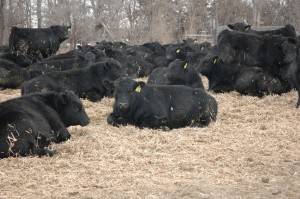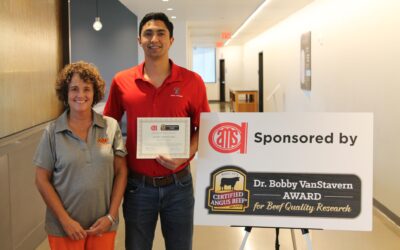
Expensive bulls aren’t that expensive
Growing up I remember arguing with my parents, telling them their economic reference points were stuck in the 1950s. They would tell me about times when a loaf of bread cost a nickel, the movies cost a dime, etc.
Any son hates to admit that they might be acting like their parents, but lately I have caught myself using economic reference points that are getting a bit dated. I still think all hotel rooms should cost less than $80, I should be able to take my family of four to the movies for less than $20, and $30,000 should buy the biggest, nicest truck on the market.
 If I am honest, I’ve had some of the same thoughts when reading Angus bull sale reports over the past couple of years. “Wow, can a commercial guy really afford to pay THAT for a bull?”
If I am honest, I’ve had some of the same thoughts when reading Angus bull sale reports over the past couple of years. “Wow, can a commercial guy really afford to pay THAT for a bull?”
To recalibrate my economic reference points, I started doing some math. A few months ago, Miranda wrote about a calculator that Jim McGrann, emeritus ranch management economist at Texas A&M, developed to help determine what you could pay for a bull.
I played around with that calculator and used the “pounds of calf required to pay bull depreciation” feature for this comparison.
I used to think of $3,000 as a good average price for a registered Angus bull for a commercial herd, so I started from there. I went back in time about 5 years when feeder cattle were worth $90/cwt. and cull bull prices were $60/cwt. With those assumptions (and a 4-year productive life), that $3,000 required 21.3 lb. of calf to pay for his depreciation.
Using today’s figures of $175/cwt. feeders and $90/cwt. salvage bull price, a $5,000 bull only requires 19.3 lb. of calf to cover his depreciation. So my $3,000 average needs to be increased to $5,000 to remain on par.
Also, looking at “lb. of calf to pay for bull depreciation,” a $1,000 additional investment (going from $5,000 to $6,000) only requires an additional 5.7 lb. of calf from that bull to pay for himself.
Another way to look at it: every additional 6 lb. of weaning weight a bull can bring to my cowherd is worth me paying $1,000 more. Using my $5,000 base, if I find a bull with an 18-lb. WW EPD advantage over the average bull, he’s worth $8,000. That doesn’t even get into the added value a bull with better carcass EPDs can bring.
So going back and looking at some of the prices paid for registered Angus bulls in recent sales I am convinced most cattlemen are way ahead of me in doing this math. Paying up for a good bull really makes sense…. and dollars and cents.
-Mark
You may also like
Nebraska Ranch Receives Certified Angus Beef Commercial Award
Troy Anderson, managing a Nebraska ranch, focuses on breeding thriving maternal cows that will grade premium Choice and Prime, while respecting livestock, people and land. Anderson Cattle receives the 2023 CAB Commitment to Excellence Award. Their journey includes improving genetics, feeding home-raised and purchased calves and using data for better breeding decisions, all with a bottom-line approach.
Everything They Have
Progress is a necessity on the Guide Rock, Nebraska, ranch where Troy Anderson manages a commercial Angus herd, small grower yard, his 10-year-old son, and a testing environment. Troy’s approach includes respect for his livestock, people and land. For that, Anderson Cattle was honored with the CAB 2023 Commercial Commitment to Excellence Award.
Progress, Not Perfection
It’s a labor of love, obvious in the way she lights up explaining their family’s 33-year effort to proactively adapt Angus cows to their land. A lifetime of telling stories from the pasture or kitchen has resonated with nonfarm consumers as much as fellow ranchers. “Everything we do is about cattle, but it’s also about family and connecting our kids to the land and to the cattle,” Debbie Lyons-Blythe says.






